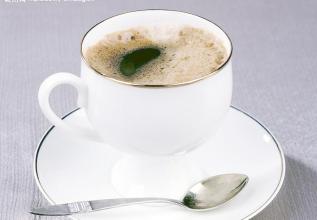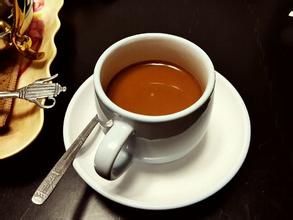Introduction to the flavor and taste characteristics of Ecuadorian coffee manor with balanced low acidity
When it comes to Ecuadorian coffee, we have to mention the organic coffee in the Galapagos Islands of Ecuador. The Galapagos Islands, a famous tourist attraction, has been declared as a "World Natural Heritage" by the United Nations Educational, Scientific and Cultural Organization (UNESCO). It is extremely rich in products, and organic coffee is one of the unique ones. With its unique ecological environment such as fertile volcanic soil and microclimate, coupled with its cultivation without any chemical fertilizers and pesticides, organic coffee in the Galapagos Islands is recognized as a natural green boutique coffee. This naturally grown coffee has a mild taste, with a hint of grass, flowers and fruit and caramel, and is highly sought after by the majority of businessmen and coffee lovers.
In addition, creative coffee made from Ecuadorian coffee beans with unique flavor is also popular with consumers. Mr. Veniso, the champion of the 2014 Ecuador Coffee Competition, won the Ecuador Coffee Competition with his creative formula. One espresso is fresh and unique with mint grass from the Amazon, while the other is full of fragrant Ecuadorian rose petals with "Rolls in the Rose". Coffee lovers praise Galapagos Islands coffee is recognized as green natural coffee, because the Ecuadorian government has designated the archipelago as a national park, not only is no longer allowed to reclaim new agricultural land And the use of chemical fertilizers, pesticides, herbicides and other chemicals is strictly prohibited. Although the altitude of about 200m on the island is very low, but under the special influence of the sea, the climate of this area is equivalent to the climate of terrestrial 1000m-1800m, which is very suitable for the growth of coffee, especially the quality of extra hard coffee (SHB) is excellent.
Coffee is also produced in Ecuador. Ecuador's coffee grows well because the Andes pass through the middle, coupled with sufficient precipitation, suitable temperatures and rich light under the influence of the tropical climate. Top coffee Gigante and coffee from the Galapagos Islands are the best of coffee, although Arabica coffee has not been grown in Ecuador for a long time.
Ecuadorian coffee has distinctive South American coffee characteristics. The fragrance is soft, as if you can go back to the ancient and mysterious Inca empire. Coffee is a good history, you need to savor it carefully in order to understand the vicissitudes of life.
Balanced with low acidity and rich aroma. The bitter taste is not obvious, the taste is clear, but there is a lingering aftertaste for a long time. The superior environment creates the crisp character of the coffee, and the enthusiasm of the coffee farmers gives the coffee enthusiastic life. the best Ecuadorian coffee is grown on the island of San Cristobal in the Galapagos Islands. it has the unique natural geographical conditions that breed the best quality coffee in the world. A cup of Galapagos coffee, like the beautiful scenery of the Galapagos Islands, is sure to impress you.
In the mid-15th century, there were legends about enchanted mysterious islands among fishermen fishing in the western Pacific Ocean of South America. It is said that the islands can sometimes be seen clearly from a distance, but when the ship approaches, it disappears again; sometimes it looks like a galleon, sometimes it shows the shape of a witch. Fishermen call these islands "Devil Island", thinking that they may be ruled by demons like the sea banshees in the Odyssey. The island, which fishermen call "Magic Island", is now the Galapagos Islands.
In 1535, Frey Thomas de Belanga of Spain and others stumbled upon the Galapagos Islands. Thomas was born in 1487 on the Douro River in the province of Soria, Spain, and was the fourth bishop of Panama at that time. He was ordered to go to Peru. When his ship set sail from Panama on February 23, under the impact of a strong current, they were taken to the unknown sea, and on March 10, they discovered a small island in the Galapagos Islands. At that time, there were only two days of fresh water left on the ship, and the sailors landed in lifeboats and found a large number of seals, sea turtles, giant tortoises that could carry people, and iguanas that looked like venomous snakes, but they did not find fresh water, so they sailed to another larger island more than 20 kilometers away. As there was still no wind, it took them several days to get there. The water ran out quickly and they had to starve, including the horses on the boat without grass.

Important Notice :
前街咖啡 FrontStreet Coffee has moved to new addredd:
FrontStreet Coffee Address: 315,Donghua East Road,GuangZhou
Tel:020 38364473
- Prev

Introduction to the flavor and taste characteristics of Uganda coffee manor with extremely light fragrance
At that time, Java coffee sold to Europe was a very special kind of coffee. At that time, it was shipped to Europe and the United States by sailboat, and the distance was long and the speed was slow, so it took a lot of time to transport. In this case, the coffee seems to have undergone a special fermentation and has a very unique taste. Later, when the ship replaced the sailboat, people drank because the transportation time was shortened.
- Next

Introduction to the characteristics of Panamanian Cupid Coffee Flavor Manor with bright and elegant acidity
Panama is a small country located in the center of the American continent. The waters of the Atlantic and Pacific oceans flood its beaches. Panama is located at 9 degrees north latitude, the meeting point of the Central Mountains, where Mount Baru, one of the highest volcanoes in Central America, is located. Baru volcano has an altitude of more than 11400 feet, and the land around it is rich in nutritious and fertile soil, which is unique to Panama.
Related
- Detailed explanation of Jadeite planting Land in Panamanian Jadeite Manor introduction to the grading system of Jadeite competitive bidding, Red bid, Green bid and Rose Summer
- Story of Coffee planting in Brenka region of Costa Rica Stonehenge Manor anaerobic heavy honey treatment of flavor mouth
- What's on the barrel of Blue Mountain Coffee beans?
- Can American coffee also pull flowers? How to use hot American style to pull out a good-looking pattern?
- Can you make a cold extract with coffee beans? What is the right proportion for cold-extracted coffee formula?
- Indonesian PWN Gold Mandrine Coffee Origin Features Flavor How to Chong? Mandolin coffee is American.
- A brief introduction to the flavor characteristics of Brazilian yellow bourbon coffee beans
- What is the effect of different water quality on the flavor of cold-extracted coffee? What kind of water is best for brewing coffee?
- Why do you think of Rose Summer whenever you mention Panamanian coffee?
- Introduction to the characteristics of authentic blue mountain coffee bean producing areas? What is the CIB Coffee Authority in Jamaica?

